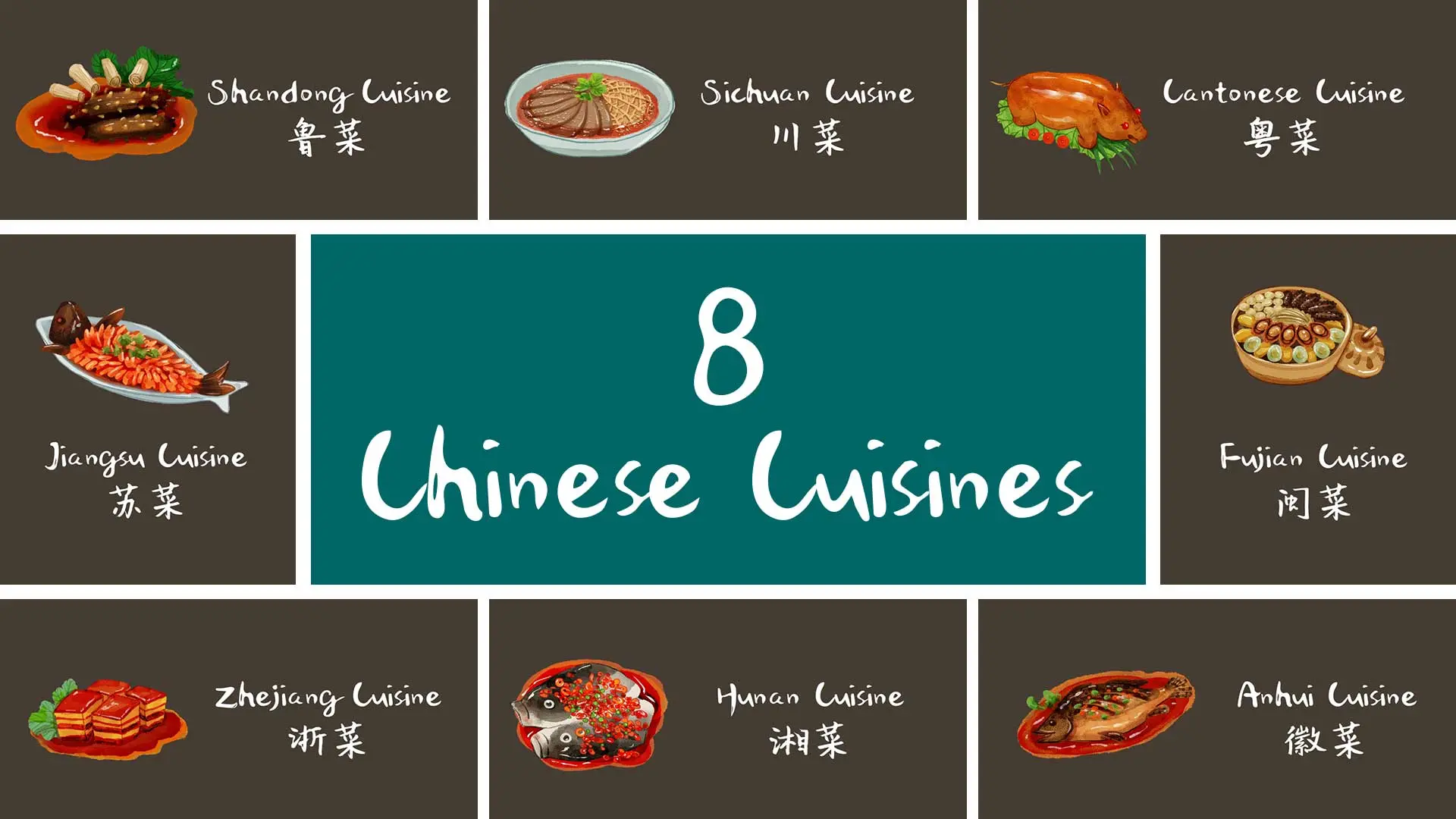
China is a country with a big catering culture. For a long time, due to the influence of geographical environment, climatic property, cultural traditions and other factors in a certain region, dishes with a certain degree of kinship inheritance, similar flavors and high reputation have been formed. These local flavor dishes that are loved by local people are collectively called cuisines.
As early as the Spring and Autumn Period and the Warring States Period, the flavors of northern and southern dishes in traditional Chinese food culture showed differences. By the Tang and Song Dynasties, Southern Food and Northern Food had formed separate systems. By the early Qing Dynasty, Shandong cuisine, Jiangsu cuisine, Cantonese cuisine, and Sichuan cuisine had become the most influential local cuisines at that time, and were called the “Four Major Cuisines.” By the end of the Qing Dynasty, four new local cuisines, namely Zhejiang cuisine, Fujian cuisine, Hunan cuisine and Anhui cuisine, had differentiated and formed, together forming the “eight major cuisines” in traditional Chinese food culture.
Cantonese/Guangdong Cuisine

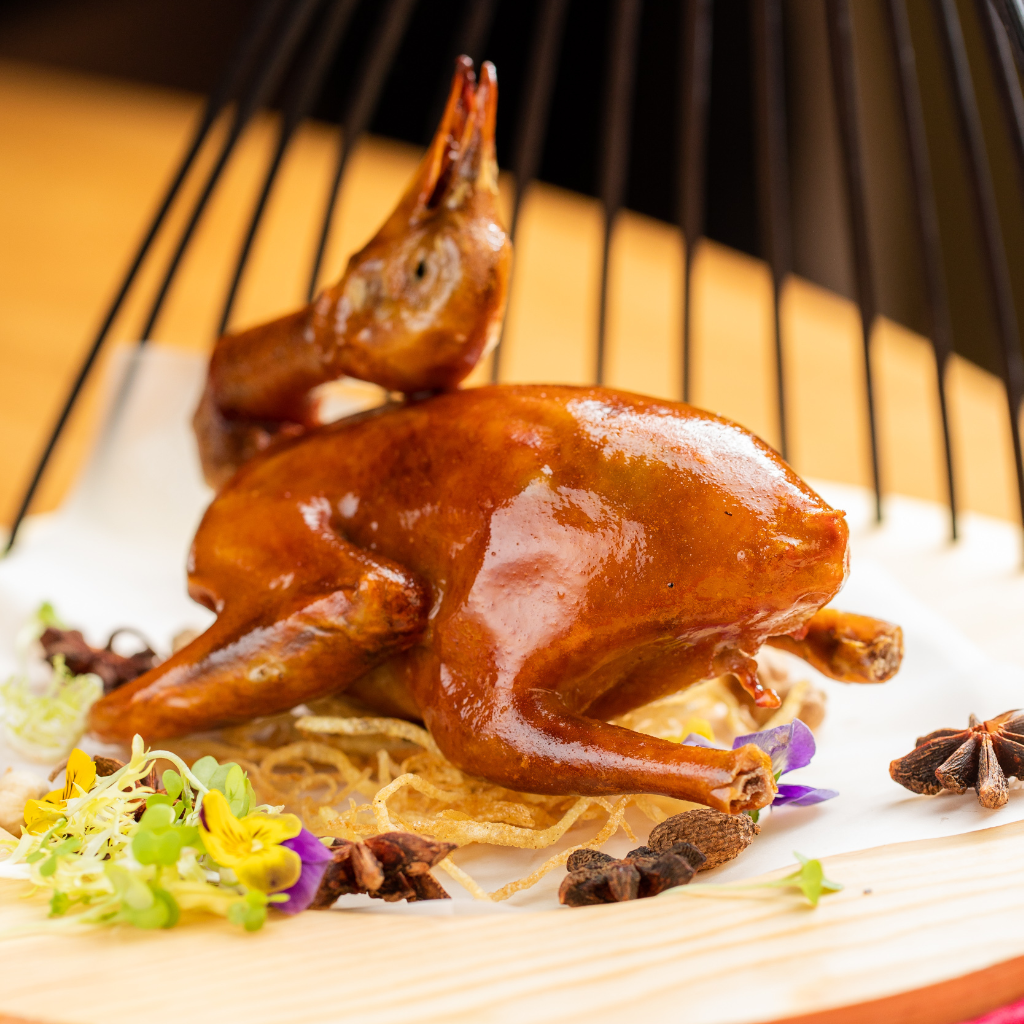
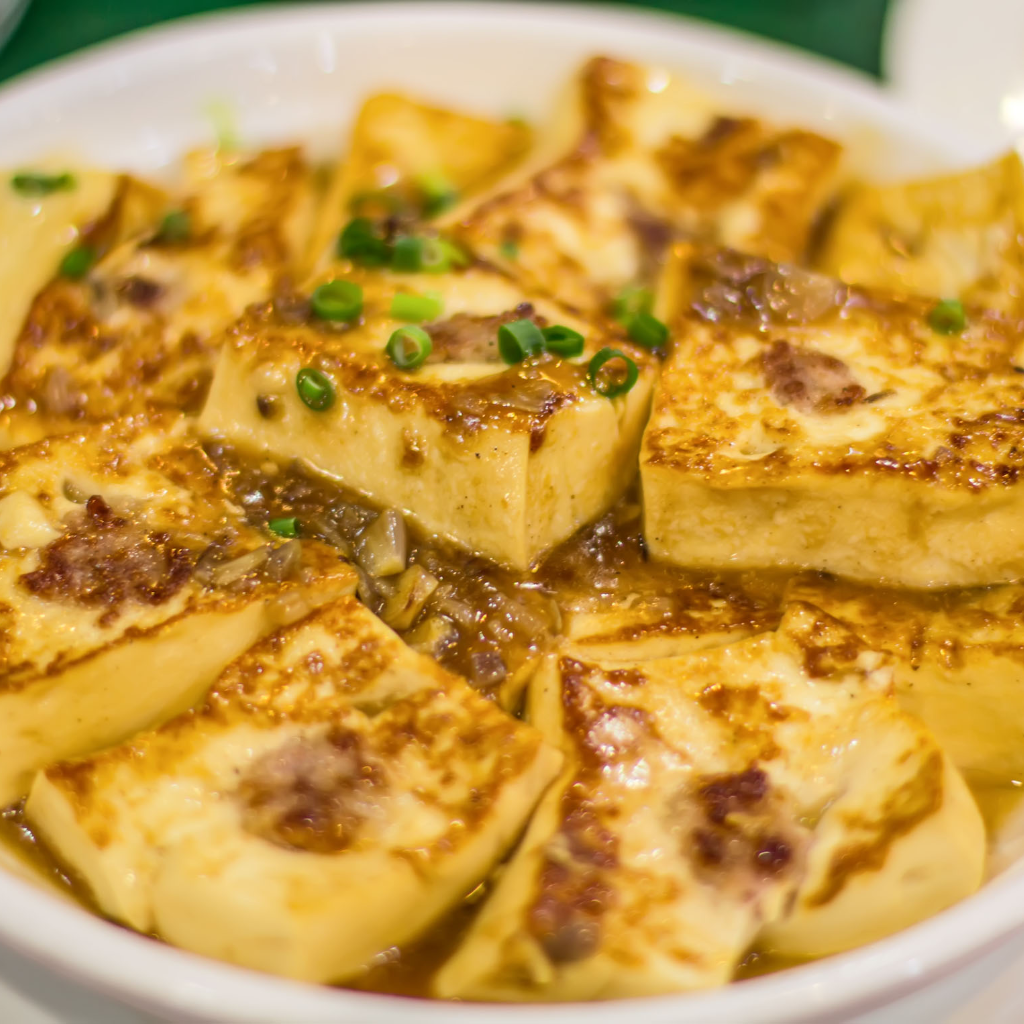
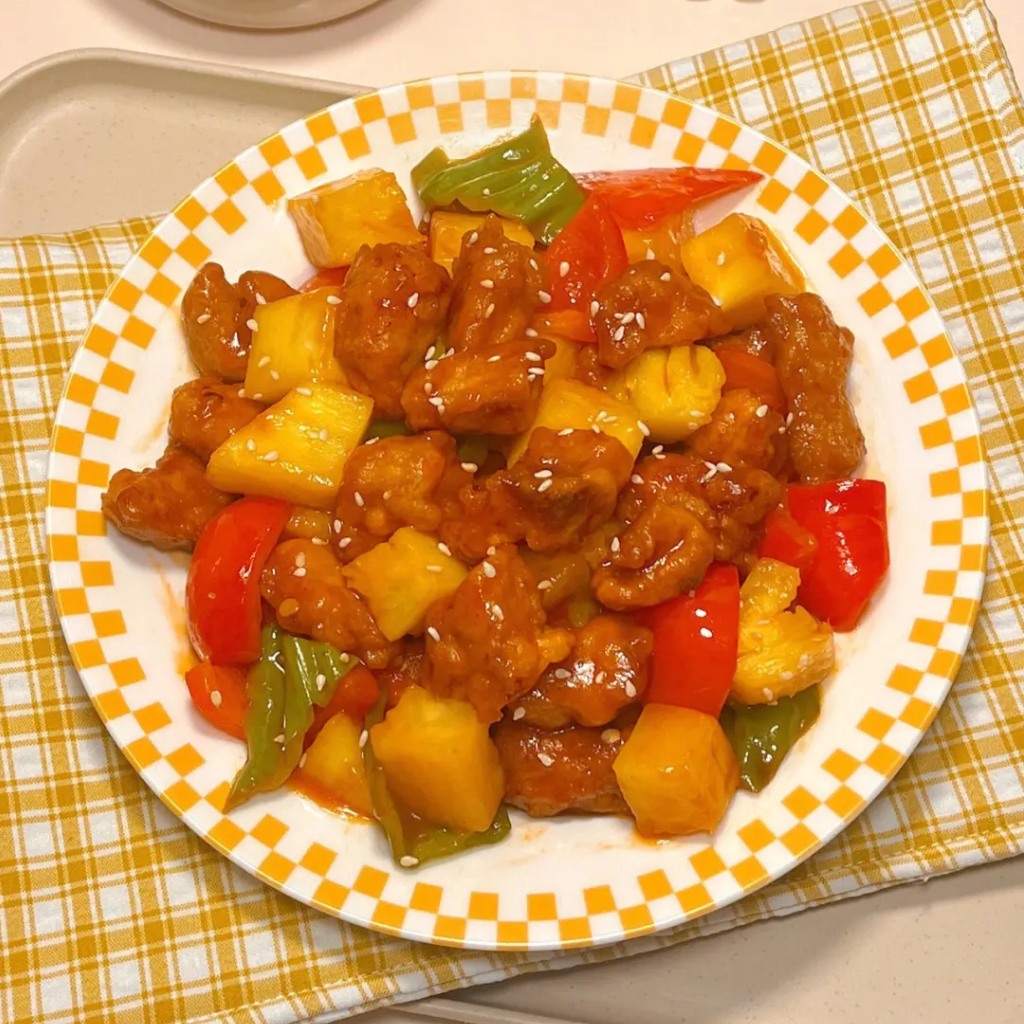
Introduction
Cantonese cuisine is referred to as Guangdong cuisine. It is composed of 3 local flavors: Guangzhou cuisine, Chaozhou cuisine (also known as Chaoshan cuisine), and Dongjiang cuisine (also known as Hakka cuisine). Each of the three flavors has its own characteristics. Chaozhou cuisine is the backbone and representative of Cantonese cuisine. Chaozhou cuisine has been officially designated as the only representative of Chinese food culture to participate in the World Expo three times in a row. Chaozhou cuisine is one of the best Chinese cuisines.
Feature
Cantonese cuisine is as famous as French cuisine around the world. Most Chinese restaurants around the world focus on Cantonese cuisine. Therefore, many people believe that Cantonese cuisine is the representative cuisine of China overseas. Cantonese cuisine is characterized by rich and fine selection of ingredients and light taste. Cantonese cuisine has many raw materials to choose from, so it is naturally sophisticated.
In addition to selecting the best plump period of raw materials, Cantonese cuisine also pays special attention to selecting the best parts of raw materials. Cantonese cuisine pays attention to the taste of “clear, fresh, tender, smooth, refreshing and fragrant” and pursues the original and fresh taste of raw materials. Cantonese cuisine has a wide variety of seasonings, ranging from sour, sweet, bitter, spicy, salty and fresh. But only use a small amount of ginger, onion, and garlic as the “tops”, and use less spicy seasonings such as chili peppers, so it won’t be overly salty or overly sweet. This pursuit of lightness, freshness and original flavor not only conforms to the climate characteristics of Guangdong, but also meets the requirements of modern nutrition. It is a scientific food culture.
1. Guangzhou cuisine covers the Pearl River Delta and Zhaoqing city, Shaoguan city, Zhanjiang city and other places. It uses rich ingredients, carefully selects ingredients, and has excellent techniques. It is light but not bland, fresh but not vulgar, tender but not raw, and oily but not greasy. Specializing in stir-fry, it requires the right heat and oil temperature. It is also compatible with many Western cuisine recipes and pays attention to the momentum and grade of the dishes.
2. Chaozhou cuisine originated from the Chaoshan area and combines the strengths of Fujian and Guangdong to form its own style. It is famous for cooking seafood, and soups, vegetarian dishes, and beets are the most distinctive and have a pure taste.
3. Dongjiang cuisine originated from the Hakka area in Dongjiang, Guangdong. The dishes mostly use meat and rarely aquatic products. The main ingredients are outstanding, and they pay attention to the fragrance. It is heavy on oil and has a salty taste. It is famous for casserole dishes and has a unique local flavor.
Classic Cantonese dishes include: White cut chicken, roast goose with crispy skin, roast suckling pig, roast pigeon, honey BBQ pork (Char Siu), baked lobster in soup, steamed grouper fish, boiled shrimp, coconut milk rock sugar bird’s nest, braised shark’s fin with vegetable gallbladder, braised lobster abalone, dry beef chow fun, old fire soup, claypot rice, Cantonese-style braised stuffed duck, steamed pork ribs with black bean sauce, sweet and sour pork with pineapple, pan-fried furong egg, chimney cabbage, fish flavored eggplant pot, Sai crab, taro pork belly, thick southern milk Zhaibao, Teochew brine platter, braised pork knuckles, braised foie gras, oyster bake, hibiscus shrimp, sand tea beef, Hakka stuffed tofu, braised pork with pickled vegetables, salt-baked chicken, pork belly-wrapped chicken, etc.
Szechuan/Sichuan Cuisine

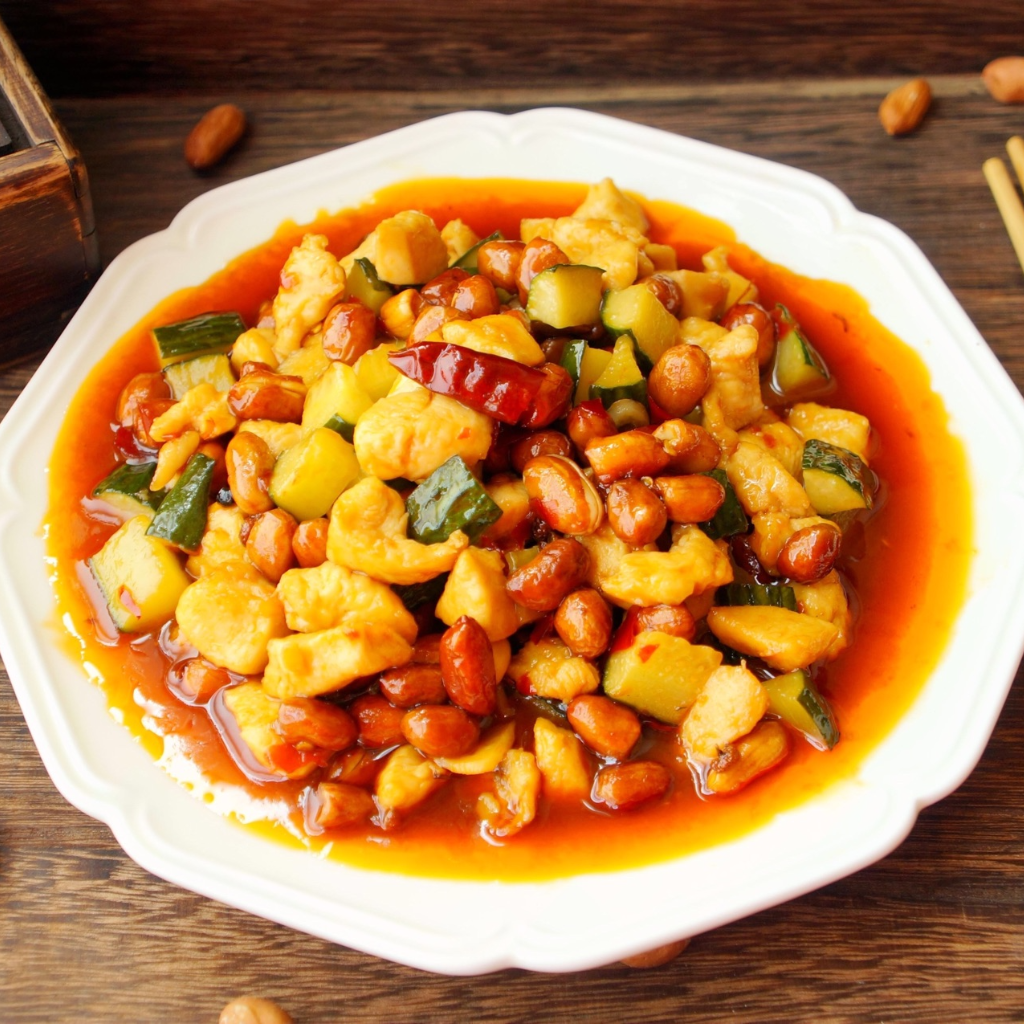
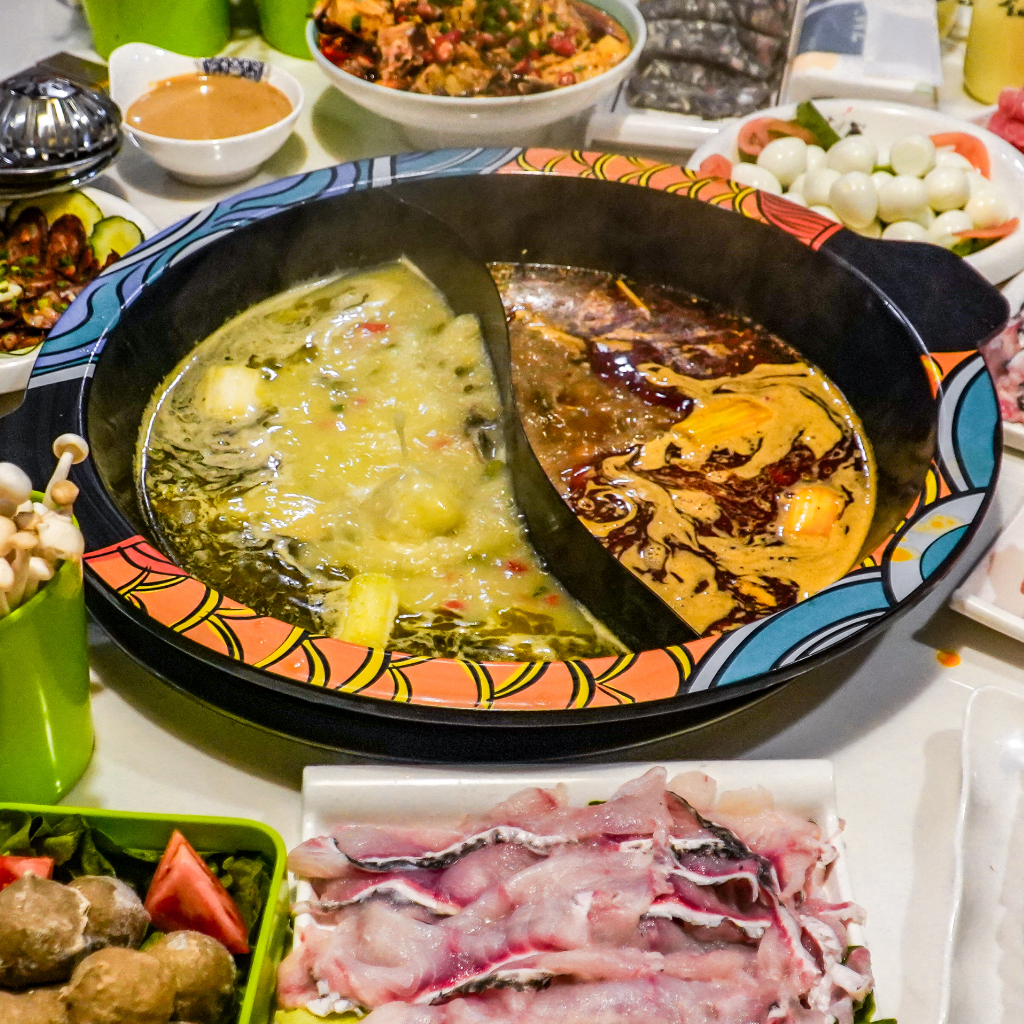

Introduction
On the original basis, Sichuan cuisine absorbs the advantages of northern and southern cuisines and the advantages of official and merchant banquet dishes, forming the characteristics of northern Sichuan cuisine and southern Sichuan cuisine. It enjoys the reputation of “eat in China, taste in Sichuan”.
Feature
Sichuan cuisine pays attention to color, aroma, taste and shape, and pays great attention to the word “flavor”. It is famous for its rich, broad and thick flavors. The tastes of Sichuan cuisine mainly include seven flavors: numbing, spicy, salty, sweet, sour, bitter and fragrant. There are dozens of unique compound flavors such as spicy, sour, red oil, white oil, etc., and it is known as “one dish with one style, one hundred dishes with one hundred flavors”.
In terms of cooking methods, Sichuan cuisine is good at mastering and applying them flexibly according to the raw materials, climate and the requirements of the eaters. Among the 38 kinds of Sichuan cuisine cooking methods, there are still more than 30 popular methods such as stir-frying, pan-frying, frying, roasting, pickling, braising, stir-frying, and soaking. Among the cooking methods, it is especially famous for small frying, stir-frying, dry roasting and dry stir-frying.
Representative Sichuan dishes include: dry-roasted rock carp, dry-roasted mandarin fish, fish-flavored shredded pork, strange-flavored chicken, kung pao chicken, steamed beef, mapo tofu, saliva chicken, tripe hot pot, dry-fried shredded beef, couple’s lung slices, twice / double cooked pork, Dongpo pork knuckle, Dengying beef, Dandan noodles, Lai tangyuan, long chao shou, etc.
Anhui Cuisine
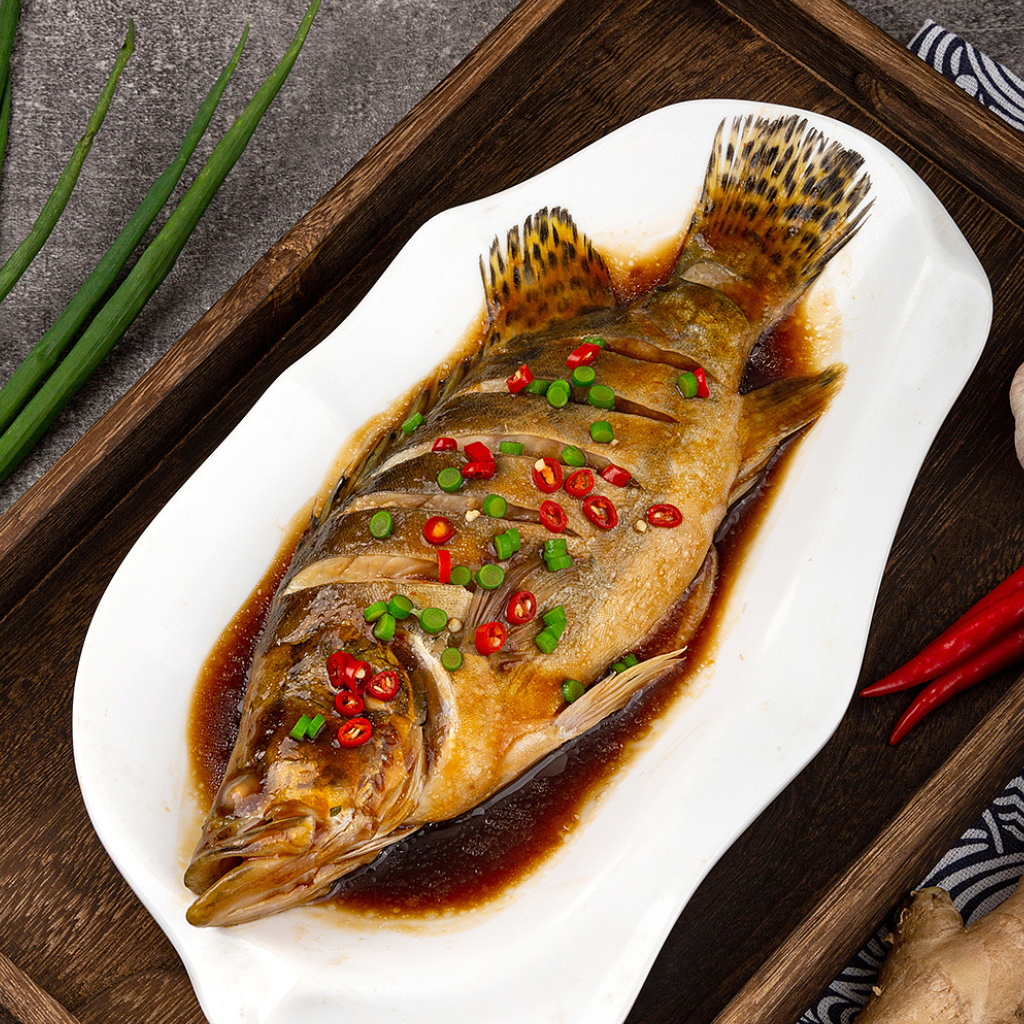
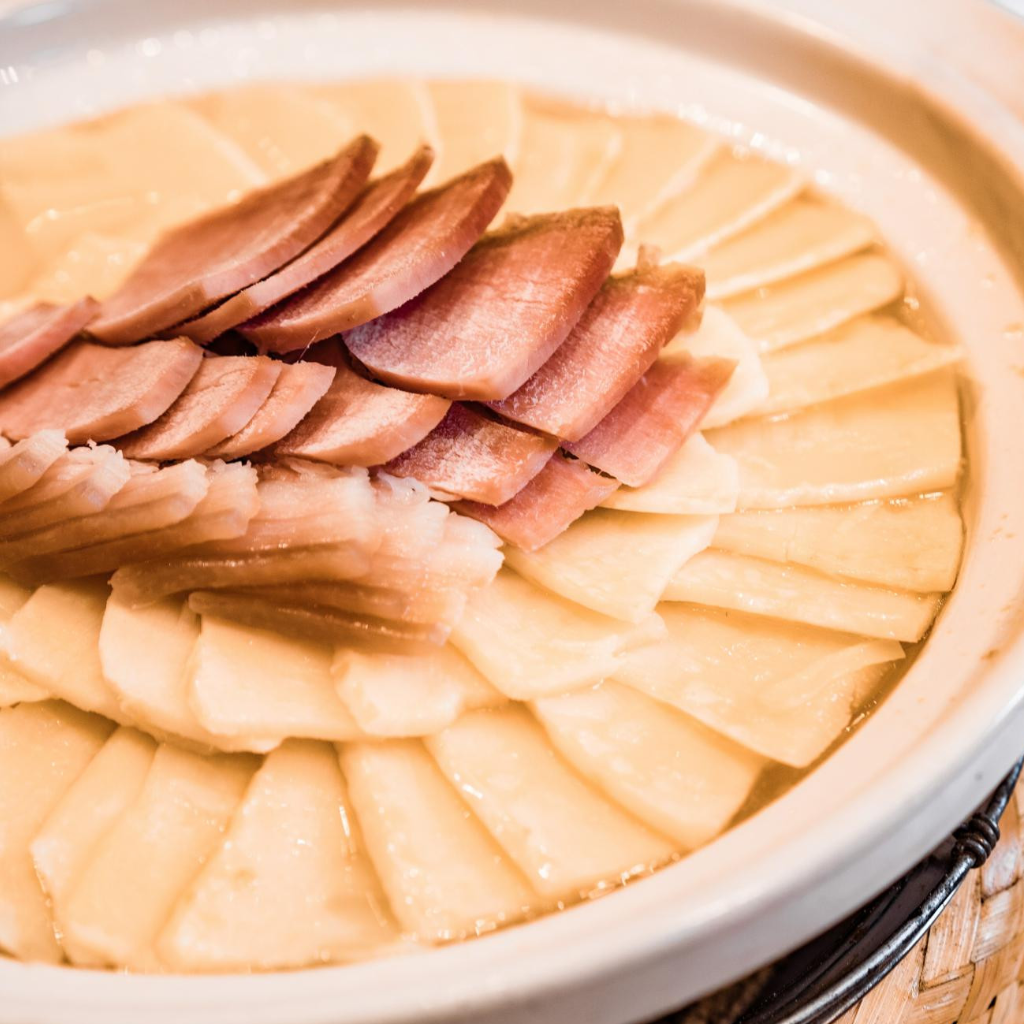
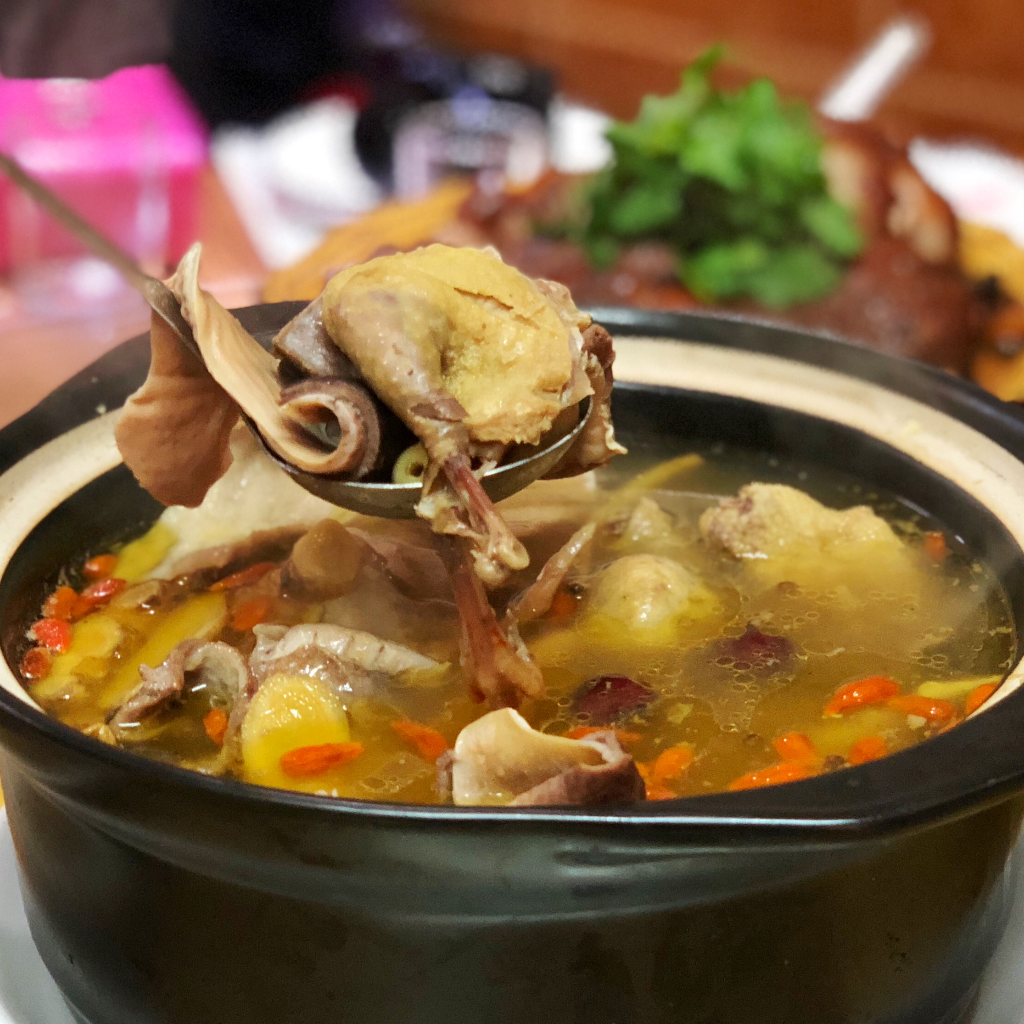

Introduction
Emerging from the landlocked Anhui province, Anhui cuisine also represents one of the eight renowned Chinese cuisines. It was originally a local flavor in the mountainous areas of Huizhou. Due to the rise of Huizhou merchants, this local flavor gradually entered the shops and spread in Jiangsu, Zhejiang, Jiangxi, Fujian, Shanghai, Hubei and even the middle and lower reaches of the Yangtze River, with wide influence. Anhui cuisine is known for its rustic, hearty flavors and innovative cooking techniques. With its celebration of humble, locally-sourced fare prepared through labor-intensive means, Anhui cuisine offers an authentic taste of this province’s rich culinary legacy.
Feature
Anhui dishes showcase an ingenious use of wild herbs, vegetables, and preserved ingredients through methods like simmering, braising, and stewing. The cuisine embraces a harmony of contrasting tastes like sweet and sour within single dishes. Signature components include flavored vinegars, bamboo shoots, and unique ingredients like storied Xuancheng sour bamboo. It is traditional for Anhui cuisine to use ham as seasoning. Making ham is also a popular household technology in Huizhou. Gourmets highly appreciate Huizhou ham.
The cooking techniques of Anhui cuisine include knife skills, heat and operating techniques. The emphasis on fire skills in Anhui cuisine has always been a fine tradition. Its uniqueness is concentrated in the kung fu dishes that are good at roasting, stewing, smoking and steaming.
The use of different fire control techniques in different dishes is an important indicator of the level of accomplishment of Huibang chefs, and it is also the basic means for Anhui cuisine to form a unique style of crisp, tender, fragrant and fresh.
There are more than 50 cooking techniques commonly used in Anhui cuisine, among which the ones that best reflect the characteristics of Anhui cuisine are roasting, stewing and smoking.
Classic Anhui dishes include: Turtle Stew with Ham, Red Braised Civet, Stinky Mandarin Fish, Hu Shi Yipin Pot, Wenzheng Mountain Bamboo Shoots, Huangshan Hairy Tofu, Huangshan Stewed Pigeon, Turtle Stew in Broth, etc.
Fujian Cuisine

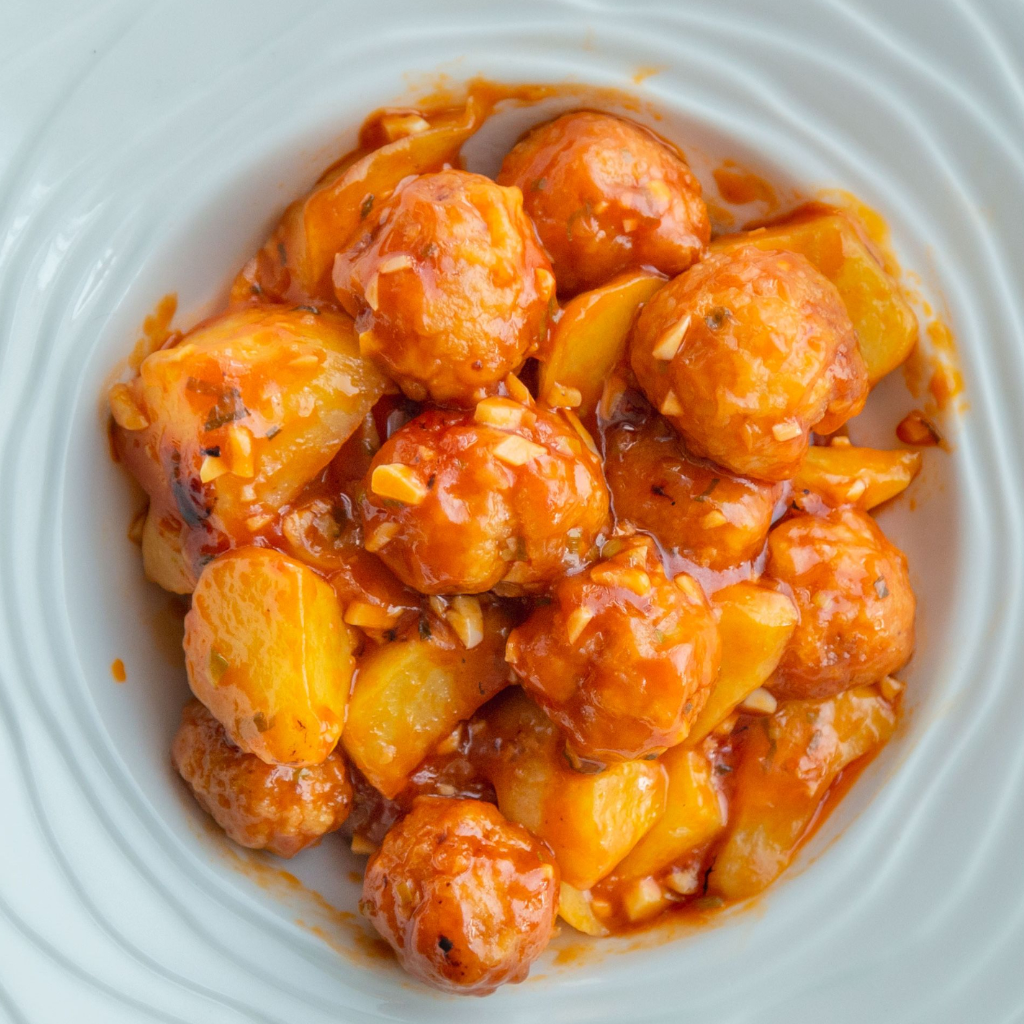
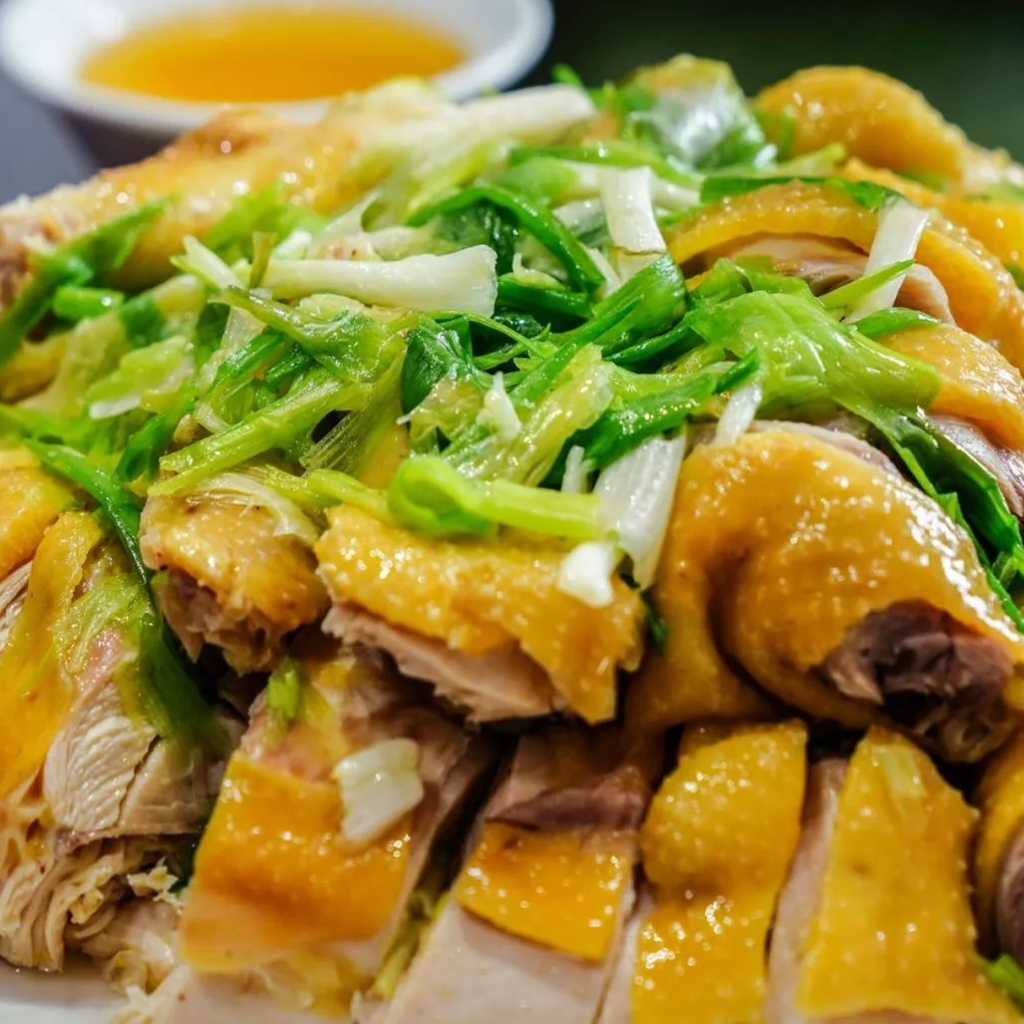
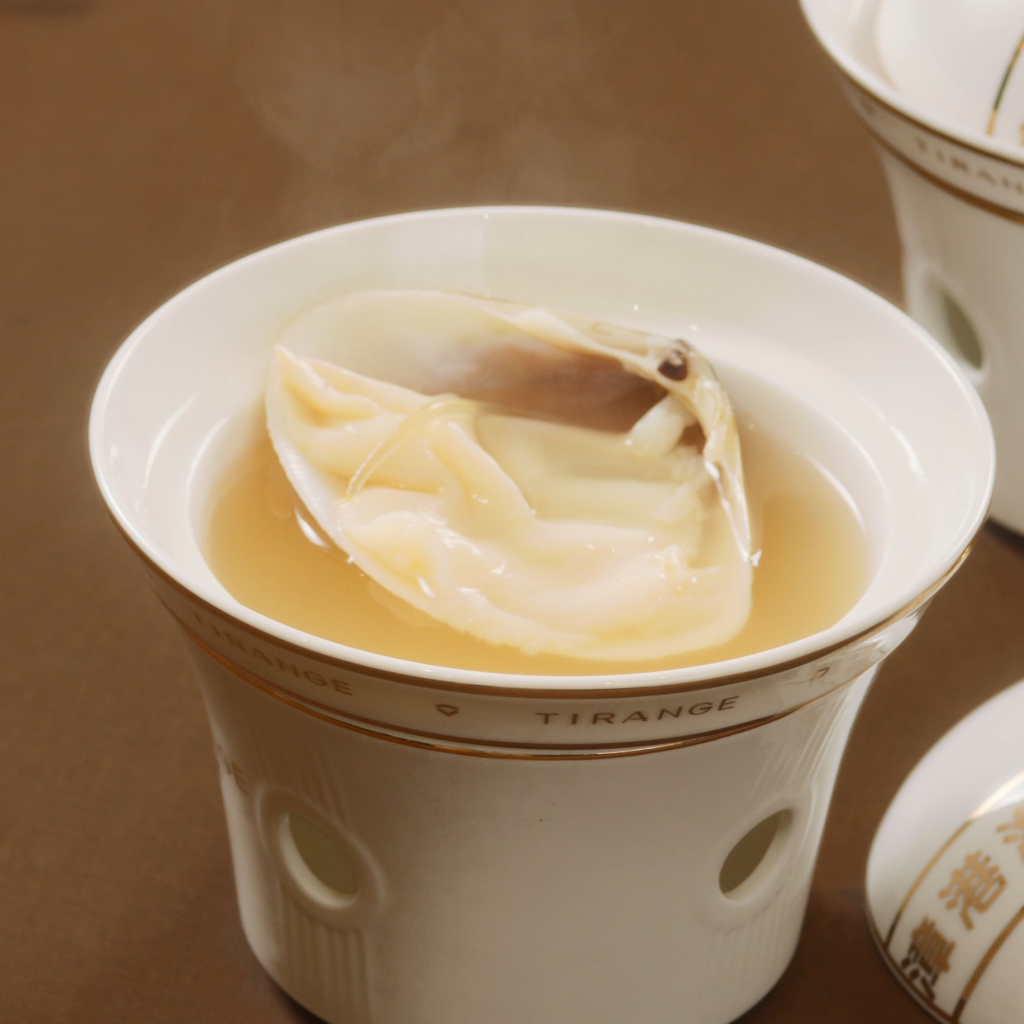
Introduction
Originating from the coastal Fujian province, Fujian cuisine is one of the eight famous cuisines in China, represented by Fuzhou cuisine, which is known for its exquisite preparation, beautiful colors and fresh seasonings.
Feature
Fujian cuisine is mainly seafood, with flavors ranging from salty, sweet, sour, spicy and fragrant. Salty condiments include shrimp paste, shrimp oil, soy sauce, etc. Sweet ones include brown sugar, rock sugar, etc., and sour ones include white vinegar, Qiaotou, etc. Spicy ones include pepper, mustard, etc. Fragrant condiments include brown sugar, five-spice powder, star anise, cinnamon, etc.
Fujian cuisine is known for its delicate flavors, sophisticated techniques, and embrace of seafood, this cuisine reflects the region’s geographic position and cultural influences. Fujian’s proximity to the East China Sea has yielded an abundance of fresh seafood incorporated into its dishes through methods like steaming, braising, and stir-frying. With its emphasis on precise knife skills, exquisite presentation, and balance of flavors, Fujian cuisine exemplifies the refined artistry of Chinese gastronomy.
Representative Fujian dishes include: Buddha Jumps Over the Wall / Fo Tiao Qiang, Lychee Pork, White Cut Hetian Chicken, Boiled Sea Clams with Chicken Soup, Wuyi Smoked Goose, Sliced Whelk with Weak Wine Sauce, Braised Duck Nuggets in Sarnath, Seven Star Fish Balls, Drunken Pork Ribs, Pan-fried Eel in Sour Sauce, Half-Moon Shenjiang, Yanskin Wontons, Fuzhou Noodles, Oyster Omelette, etc.
Hunan Cuisine
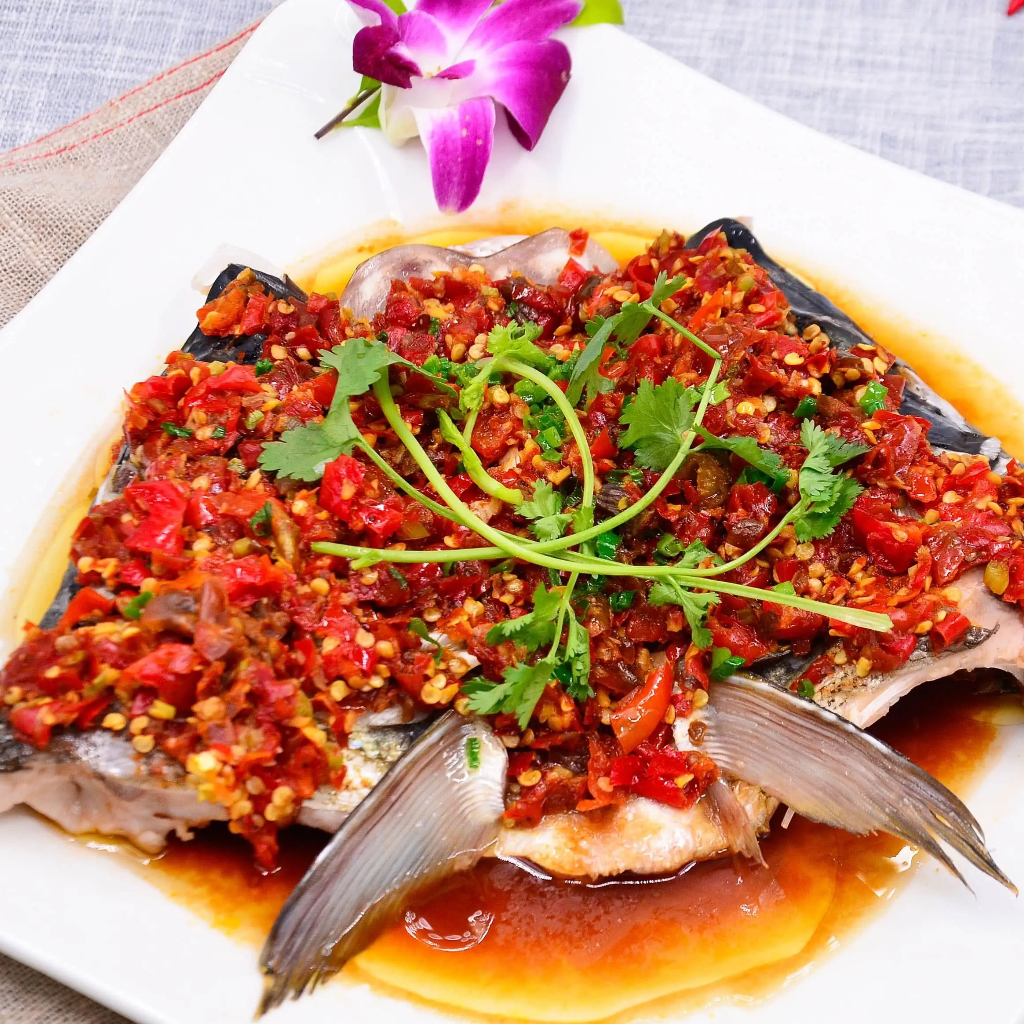
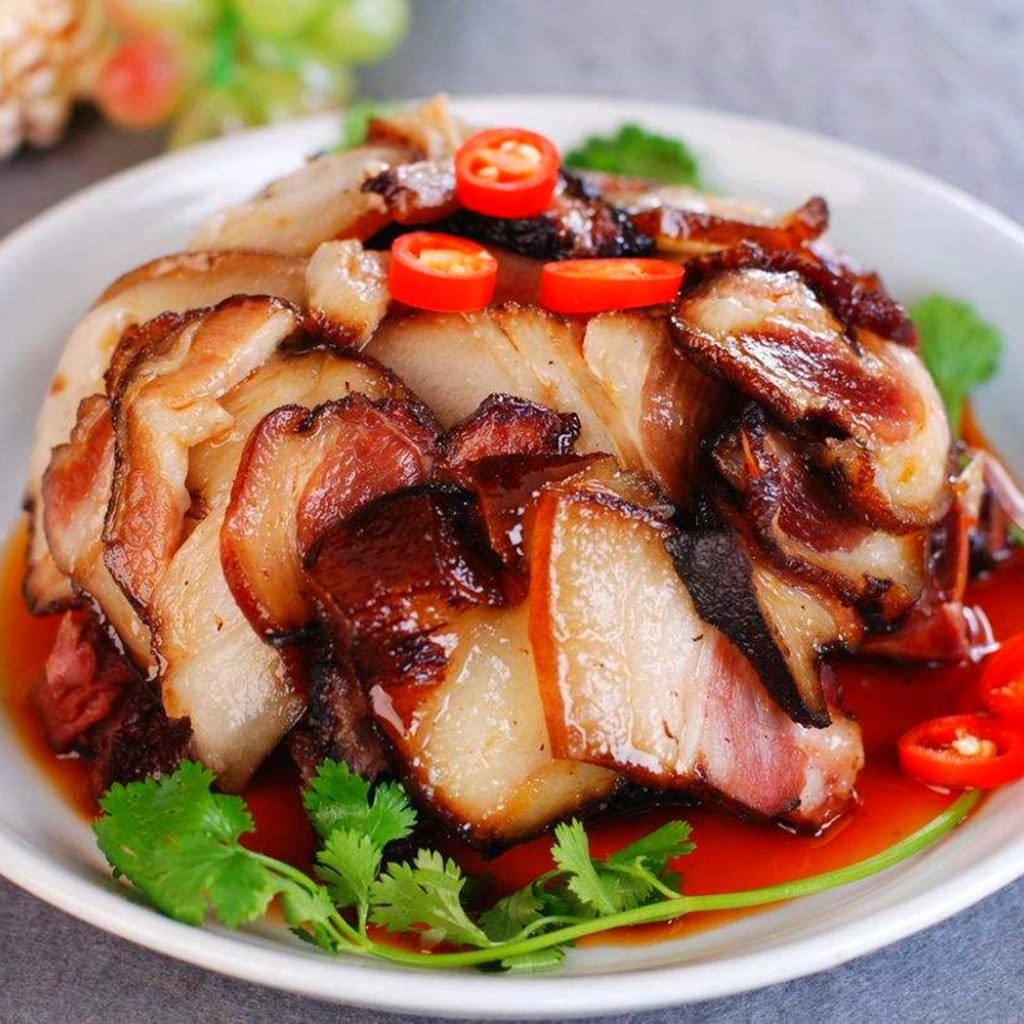

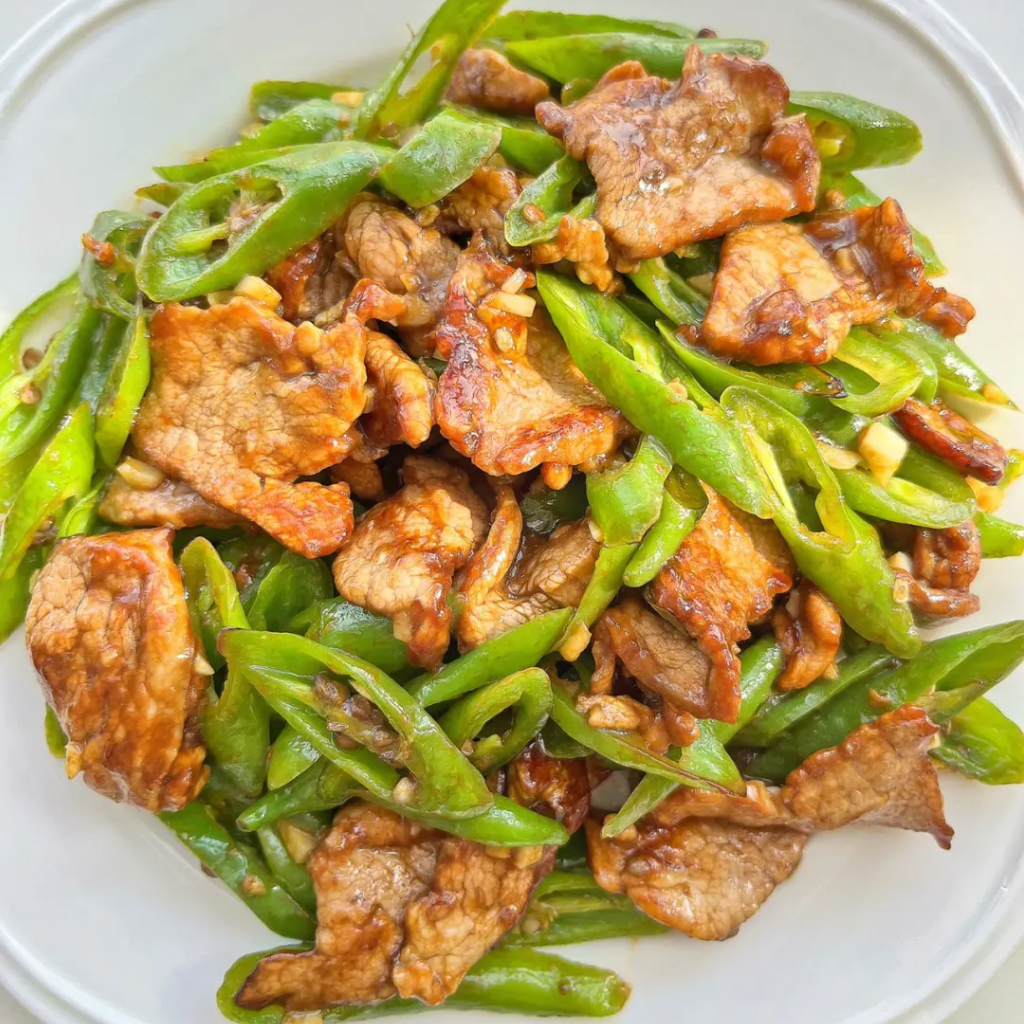
Introduction
Hunan cuisine, hailing from the land-locked Hunan province, stands as one of the eight great Chinese cuisines. Known for its bold, spicy flavors and liberal use of chili peppers, Hunan cuisine exemplifies the robust, palate-challenging character of this pivotal inland province’s gastronomy.
Feature
Hunan cuisine is famous for its spiciness. Hunan cuisine is mainly plump and fat, and peppers are often eaten as the main dish. Hunan cuisine pays special attention to the flavor of raw materials and uses various techniques, including roasting, stir-frying, steaming, and smoking. Special ingredients of Hunan cuisine include tempeh, camellia oil, chili oil, chili sauce, pepper, fennel, cinnamon, etc. Hunan dishes showcase a mastery of the wok’s searing heat to create intense sauces and burnished flavors. Signature ingredients like fermented bean pastes, preserved mustard greens, and pungent spices add potent flavors and aromas.
Classic Hunan dishes include: Fish head with chopped pepper, Dong’an chicken, dry pot chicken, steamed preserved meat, yellow duck crow, Mao’s red braised pork, stir-fried pork with black bean pepper, fish soup, rich ham, General Tso’s chicken, lettuce and shrimp floss, Yongzhou blood duck, Zu’an shark’s fin, xiangxi grandmother food, stir fry pork with chili peppers, crispy grilled vegetarian recipe, etc. And Hunan snacks include Changsha stinky tofu, Changsha rice noodles, Changde beef rice noodles, flavored shrimps, Liuyang fire-baked fish, etc.
Jiangsu Cuisine

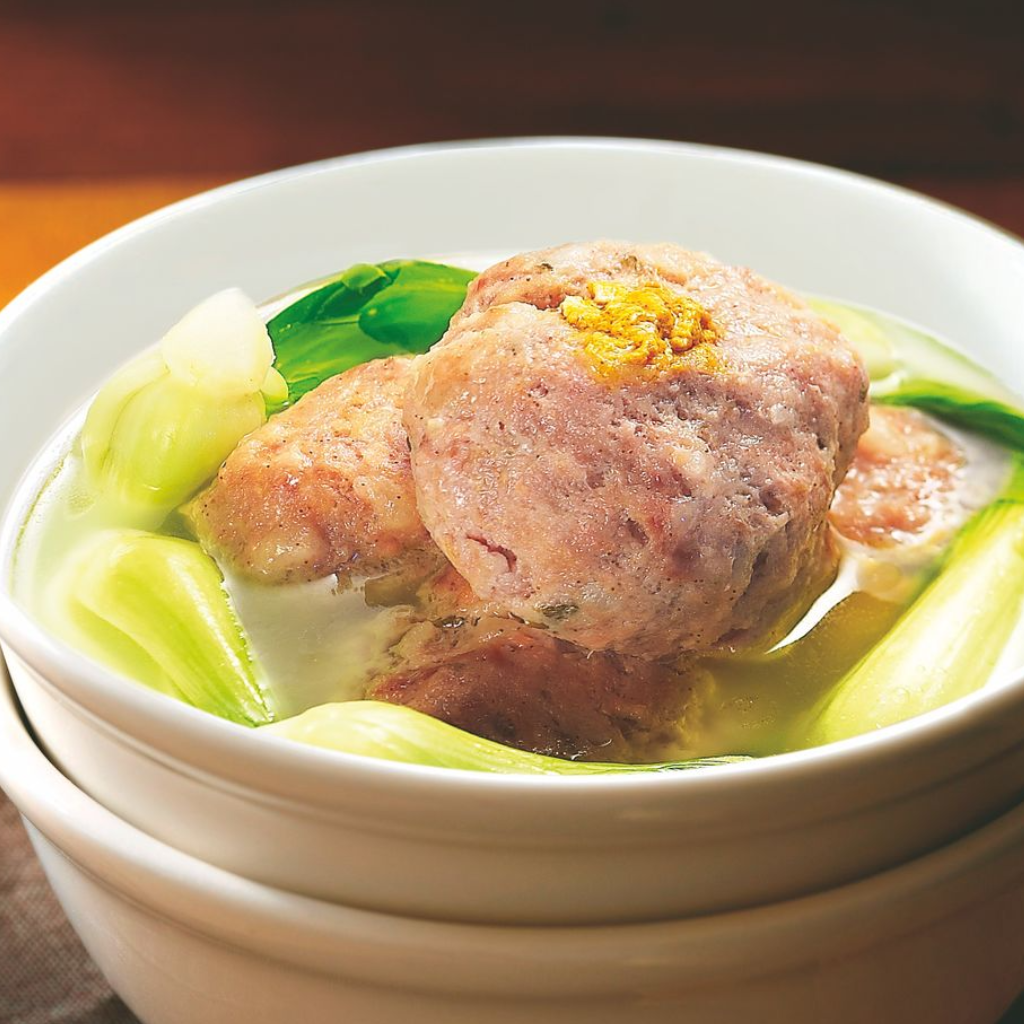

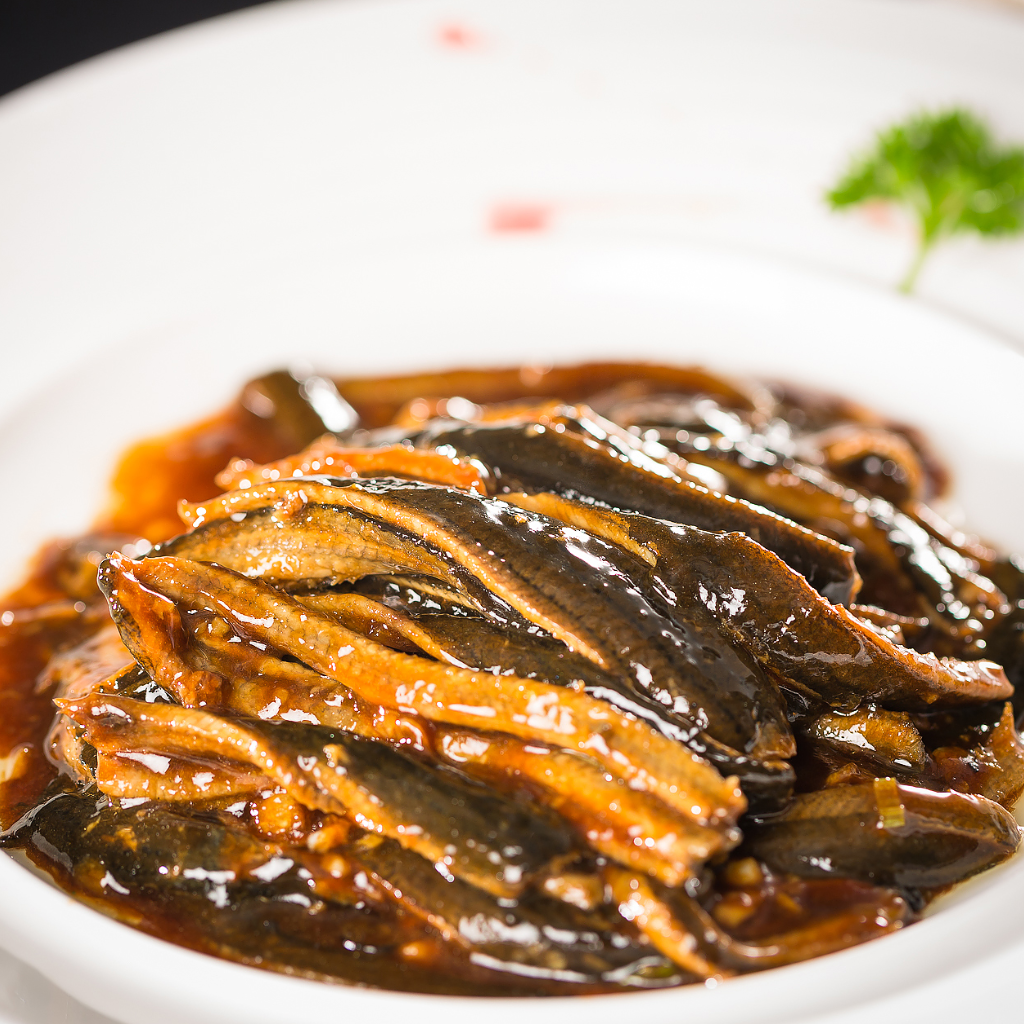
Introduction
Hailing from the prosperous Jiangsu province, Jiangsu cuisine stands as one of the eight preeminent culinary traditions of China. Renowned for its delicate flavors, fresh ingredients, and intricate preparation methods, this cuisine reflects the region’s legacy of affluence and refined tastes. Jiangsu’s famous chefs from past dynasties have created Jiangsu-style traditional cuisine. Suzhou, known as “Paradise”, Huai’an, the canal capital of “The Magnificent First State in the Southeast”, and Yangzhou, praised by historians as “the richest in the world”, are the cradle of famous chefs and gourmet food. Jiangsu cuisine is a combination of these three local flavors.
Feature
Jiangsu’s fertile lands yield an abundance of vegetables and freshwater fish expertly crafted into exquisite dishes. Jiangsu cuisine has the following characteristics: First, strict selection of materials and meticulous preparation. Second, Jiangsu cuisine is famous for its cooking methods such as stewing, braising, simmering, stewing, steaming, roasting, and stir-frying. Third, the taste is fresh, salty and sweet, thick but not greasy, light but not thin. The fourth is to pay attention to adjusting the soup and maintaining the original juice.
Suzhou cuisine tends to be sweet in taste, with fine cutting skills, subtle heat, fresh colors, unique shapes, prominent main ingredients, and original taste. Suzhou cuisine is especially famous for its soup making. With its understated elegance and sophisticated palate, Jiangsu cuisine epitomizes the gastronomic sophistication of this culturally rich region along the Yangtze River Delta of China.
Representative Jiangsu dishes include: Squirrel Shaped Mandarin Fish, Nanjing Salted Duck, Crab Meat Lion’s Head, Boiled and Dried Bean Curd, Ruandou Eel, Yangzhou Fried Rice, Duck Blood and Vermicelli Soup, Beggar’s Chicken, Wensi Tofu, Braised Dry Shredded Pork, Crystal Shrimp, etc.
Shandong Cuisine



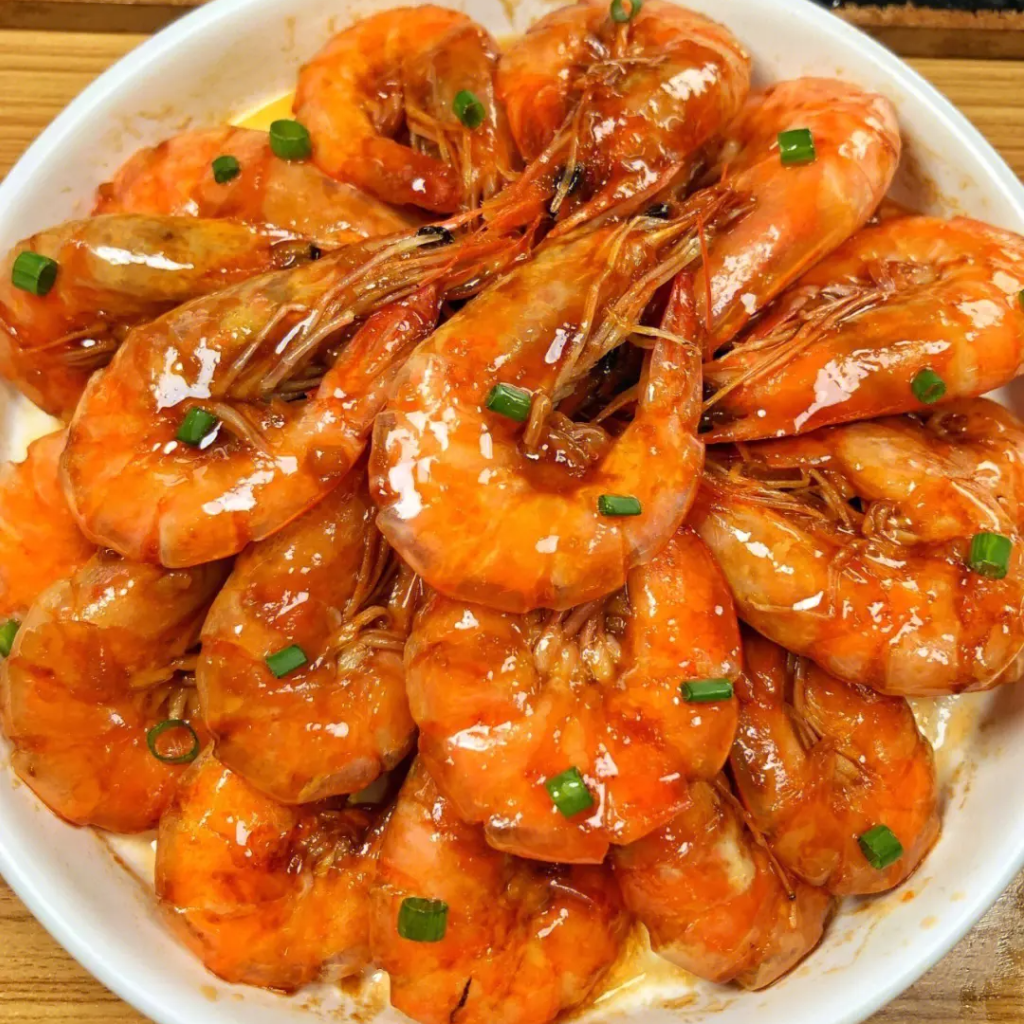
Introduction
Shandong cuisine can be divided into Jinan cuisine, Jiaodong cuisine, Confucius cuisine and other regional cuisines, with Jinan cuisine as the typical example. There are more than 50 cooking methods in Shandong cuisine, such as frying, stir-frying, braised and steamed, boiled and smoked, marinated in soy sauce, etc.
Feature
Jinan cuisine is famous for its fragrant, crisp, tender, thick and pure taste. It is especially good at making soups with clear and turbid soups.
Jiaodong flavor is also called Fushan flavor, including local flavor dishes along the Jiaodong coast such as Yantai city and Qingdao city. The Jiaodong dish specializes in seafood and is good at cooking seafood. It is a delicacy and delicious food. The dishes are rich in seafood and use less condiments to enhance the flavor.
Confucius cuisine is made with fine workmanship and comprehensive cooking techniques, especially roasting, stir-frying, simmering, deep-frying and grilling, and the production process is complicated. Dishes cooked with techniques such as simmering, stir-frying, and grilling often require three or four procedures to be completed.
Classic Shandong dishes include: braised sea cucumber with green onion, sweet and sour carp, nine-turn large intestine, braised prawns in oil, fish with vinegar and pepper, braised fish fillet, warm mandarin fish fillet, fried squid roll with coriander, white fungus in clear soup, sweet and sour pork loin, braised prawns, stir fry pork kidney, braised pork balls in gravy, Yi Pin tofu, oil fried double crispy, Zaozhuang spicy chicken, steamed Jiaji fish, onion and pepper fish, sugar sauce chicken nuggets, fried beans and so on.
Zhejiang Cuisine
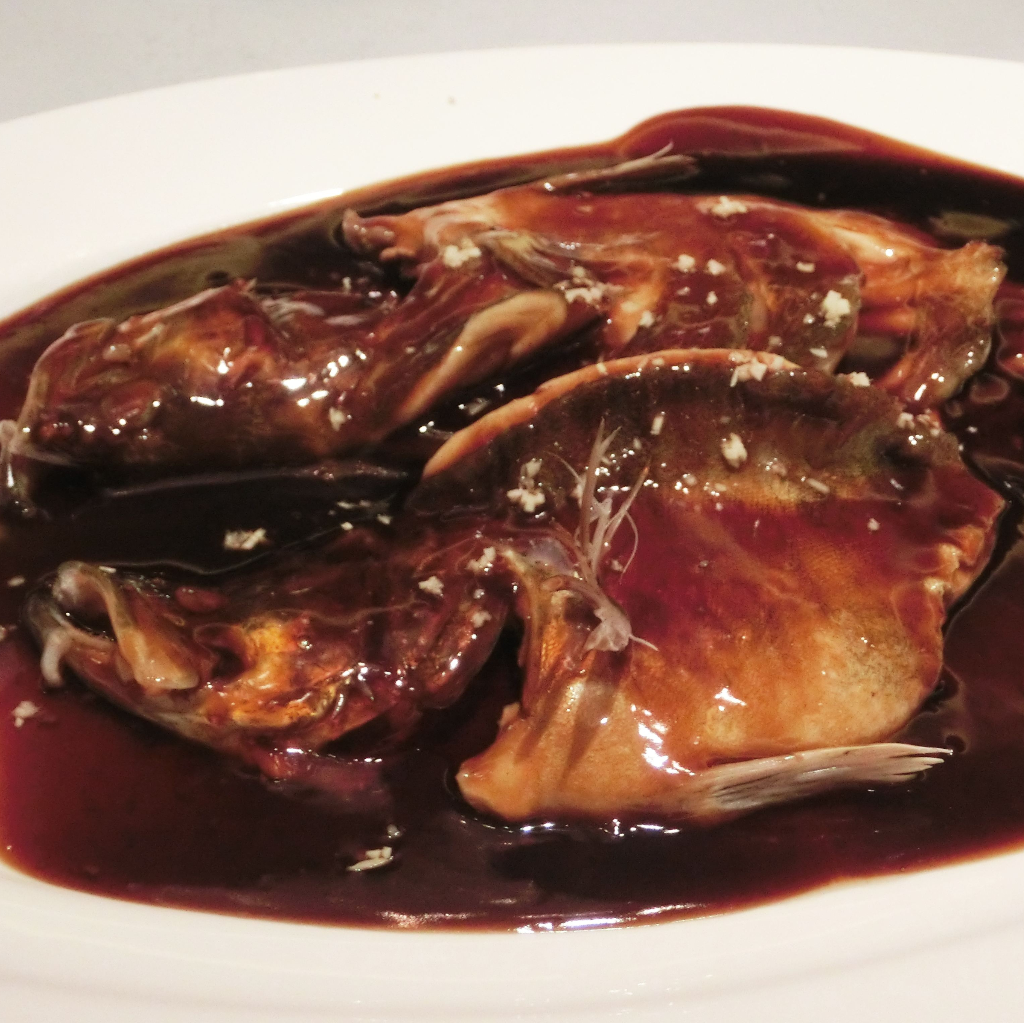
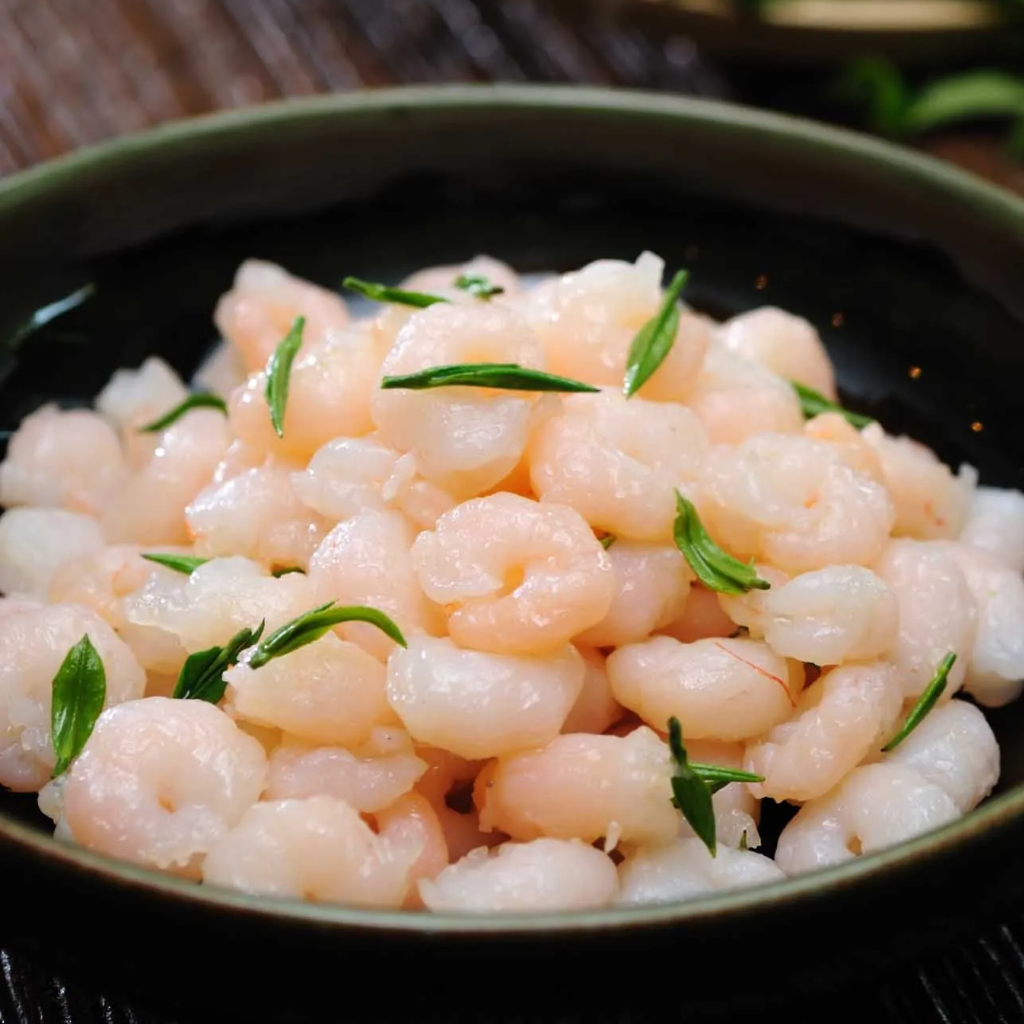
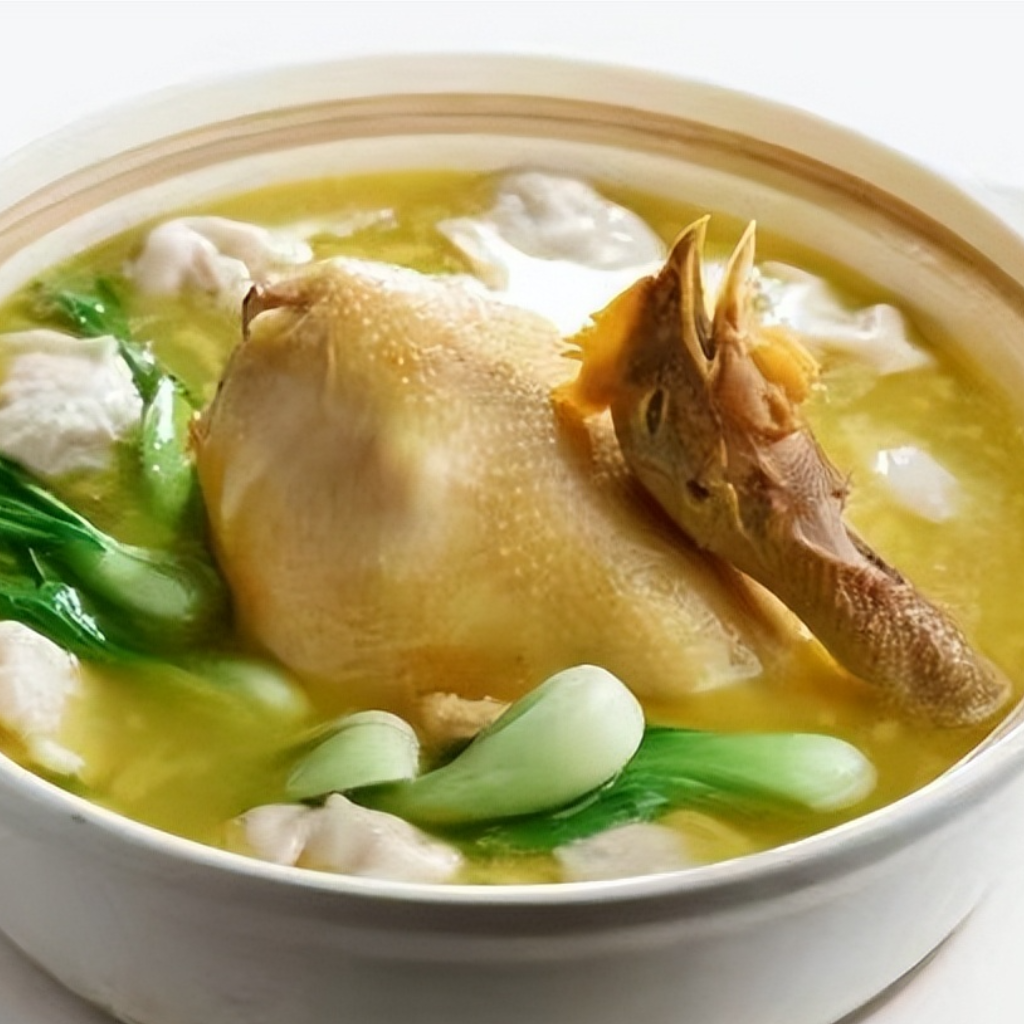

Introduction
Zhejiang is the land of plenty in the south of the Yangtze River. Known for its fresh flavors, delicate preparation techniques, and bountiful use of seafood and bamboo shoots, Zhejiang cuisine reflects the region’s maritime influences and lush landscapes. Zhejiang cuisine has the following characteristics: First, it uses a wide range of ingredients and rigorous combinations, focus on seasonality and ingredients. The second is the fine knife work. The third is the heat and seasoning, which is the most important and moderate. Fourth, it is fresh, tender and refreshing, with both nourishment and taste. Fifth, there are four branches of Zhejiang cuisine, each with its own flavor.
Feature
Zhejiang cuisine mainly consists of four local flavor dishes: Hangzhou, Ningbo, Shaoxing and Wenzhou.
Hangzhou cuisine is carefully prepared and specializes in cooking techniques such as stir-frying, stir-frying, braising, and deep-frying. It is fresh, tender, delicate, and mellow.
Local chefs in Ningbo are particularly good at preparing seafood. They are famous for their techniques of stewing, roasting and steaming. The taste is fresh and salty, and the dishes are fresh, focusing on the original taste.
Shaoxing dishes are crispy and glutinous, the soup is rich and mellow, and they are full of the simple style of the ancient water town.
Wenzhou cuisine mainly focuses on seafood dishes. The taste is fresh, light but not thin. The cooking pays attention to “two light and one heavy”, that is, light oil, light gravy, and heavy knife skills.
Classic Zhejiang dishes include: Longjing shrimps, West Lake vinegar fish, Lady Song’s fish soup, Dongpo pork, raw fried eel slices, West Lake water shield soup, thin slices of ham, eight-treasure tofu, steamed pork with lotus leaf powder, stewed chicken in clear soup, crystal sugar turtle, braised pork belly with Meigan Cai, etc.